 |
|
A Vertical Time Yoga Retreat
Sept 5th to 11th, 2013
Crestone, Colorado
Please see bottom of this page for a report on the retreat.
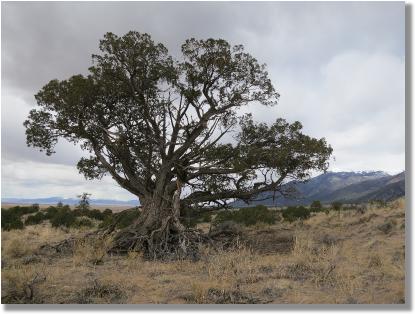
Restoring Primordial Alignment
Dear Friends - I'm holding a Vertical Time yoga retreat from Sept 5th to 11th in Crestone, Colorado. I've arranged for six cabins at the Nada Hermitage, a Carmelite center that has long offered their retreat facilities to people of all faiths and walks of life.
This is an opportunity to have a significant experience of silence and solitude while at the same time receiving practices that could become useful tools in your daily life. This is also an opportunity to live in intentional community for a week, and each of us will have a chance to share and exchange with the group on a daily basis. Obviously, the retreat will be small, therefore personal, intimate and welcoming. The natural setting we will live within is spectacular and potent (see this slide show for more Nada photographs). If you feel drawn to this retreat let me know soon since it will possibly fill quickly.
In the four-month hiatus since I last published to this website, I've gained much understanding of what Vertical Time yoga is, and how to offer it to others. In essence, VTY is a three-fold approach to daily life, an approach to address three significant human needs:
- The need to consciously experience posture; not just one posture, such as sitting (as in traditional meditation), but the infinite variety we are capable of, including standing, walking, lying down. This also means inhabiting the processes of posture, such as being born into new experience, becoming sick, dying; or of watching a crow in flight, shaking hands, caressing a loved one.
- The need to connect consciously and directly to the elements, and to understand them. We take the elements for granted (a root cause of our environmental peril), but we can also immediately reverse this habitually. We can each discover personal "rituals" that restore experience of the elements - and in turn allow us to meet ourselves at our elemental level.
- The need to be mirrored and find guidance. A human life is ideally one of continuous discovery, learning and growth. We become so easily stuck in habitual or wound patterns in part because it is difficult to see habitually and our own blind spots. Skilled teachers are among the best mirrors of our wound-habits and gifts but they are not always around or available. The I Ching and other archetypal systems that reveal pattern are real tools of mirroring and self empowerment; they can be invaluable tools for leading the most potentially awake daily life. They are always available if we chose to study and usem them.
This retreat, called Restoring Primordial Alignment, will explore these three needs and offer these specific tools to relate to them.
- Standing, lying down and sitting meditation (for an example see below).
- Instruction in Qigong of the Eight Trigrams, a qigong practice that teaches us to inhabit the eight trigrams of the I Ching, a way of experiencing the elements in our body, and to experience our body as the elements.
- An Introduction to the Human Design system, in particular as ways to understand our own gifts and specific wound patterns.
- Using the I Ching as a guide to the experience of our own body and a messenger of "what life wants from us" (see various sections below and my article I Ching: The Four Eternal Hexagrams and the Shambhala Path of the Warrior.)
- The cost of the retreat is $335 for housing and food (yes, that is less than $60 a day!) and $300 for six days of classes, a total of $635. Partial scholarships potentially available.
More on the retreat themes follows below. I warmly welcome your participation. ~ Bill Scheffel
Note: All photographs on this page were taken in the Crestone area and/or the Nada Hermitage.
A GUIDED STANDING MEDITATION PRACTICE
This 19-minute guided standing meditation is an example of one the practices we will do on retreat. The guided meditation begins with a short introduction. I would suggest you stand from the beginning of the audio so that when the guided instructions begin you will have the contrast of 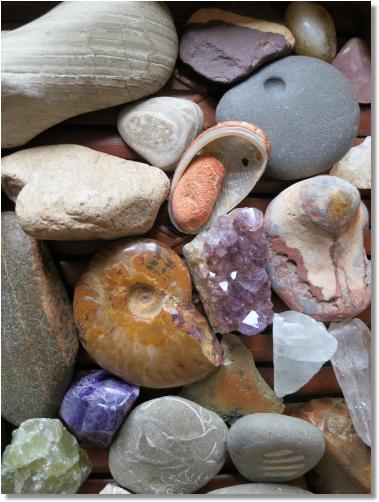 how you "normally" stand. You only need enough room around you to raise your arms to the side and eventually overhead. Your clothing should be loose and comfortable.
how you "normally" stand. You only need enough room around you to raise your arms to the side and eventually overhead. Your clothing should be loose and comfortable.
In each day, whenever we are walking, standing, waiting, we have the opportunity to come into the presence of our body and the environment around us, to open our heart and witness this fleeting world and the unconditional nowness or vertical time of each moment. This practice will help you open to your own body and the latent, subtle and profound information it has to share. Our habitual and defensive postures that become established in "horizontal" time can be remedied and realigned through bringing meditation to how we stand. For those who practice sitting meditation, try this practice before you sit and you may find your approach to posture newly informed and energized. This can also be used as a physical break or alternation to sitting meditation (or sitting at a desk!); to simply stand up and establish inner alignment relieves the body and brings new energy or a "fresh start."
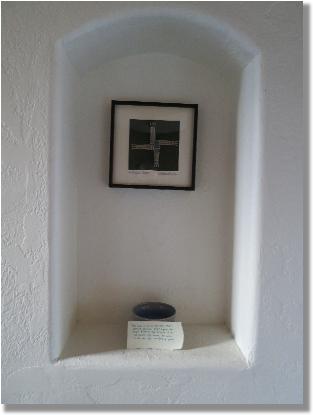
THE I CHING: "There are hexagrams everywhere if you can see them"
Jack Niland, an early student of Chögyam Trungpa, relates the well-known tale of Chögyam Trungpa arriving in North America penniless with a teenage wife, but adds that he also arrived with a copy of the I Ching - and sometimes used it in Jack's presence to make certain decisions. Chögyam Trungpa told Niland - this being 1970 - that he “used the I Ching for everything” though only occasionally opened the book. “Read it, memorize it, then throw it away,” Trungpa suggested to Niland, “there are hexagrams everywhere if you can see them.”
Interior, Nada retreat cabin.
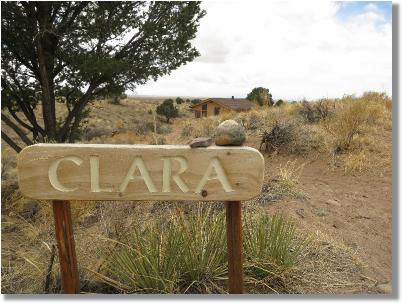
A Nada retreat cabin.
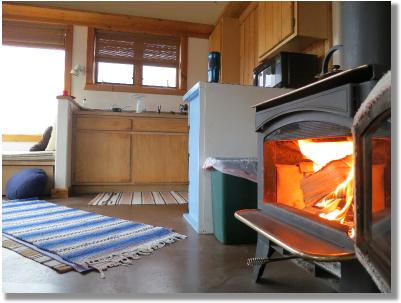
Retreat cabin interior.
Complete Openness, Natural Perfection, Complete Spontaneity: Rigdzin Shikpo - his given/family name was Michael Hookam - studied with Chogyam Trungpa in the late 1960s in England and was, in fact, one of Rinpoche's first students. What follows below are excerpts from a recording Rigdzin Shikpo made in which he recalls some of the first and most pithy teachings he received from Chogyam Trungpa. Rigdzin Shikpo's presentation of complete openness, natural perfection and absolute spontaneity is virtually identical to the text Maha Ati that Chogyam Trungpa later gave to his American students. These teaching are for me a foundation for Vertical time yoga.
- The first aspects of the teachings was what he called complete openness. He said this is the way that you had to act to everybody and to every situation you encountered, you had to be completely open, without having prejudice mind and you had to train yourself in that particular way.
- It’s not just a question of things of being open, which one might interpret perhaps as some kind of ultimate emptiness, but that things form some kind of coherent pattern just naturally, and this he called natural perfection. There isn’t anything that is not significant and not valuable. The important thing in one’s life and in ones behavior was to see this kind natural patterning and to go with that, not in the sense, again, of indulging in it, but to be able to experience it and to open out to it.
- The third aspect was to allow the quality of absolute spontaneity to arise. Absolute spontaneity isn’t really something that you can say, “I’m going to be spontaneous”; that of course wouldn’t make any sense, and you can’t in any way make spontaneity happen, of course, but it is possible to lay some kind of ground for that spontaneity to arise.
- it was possible in the general experience of one’s life and one’s Buddhist practice to make those three things a complete unity, and then if you do that you have the experience of what is called the tree of life. That everything that arises has something of significance or value, that nothing in your life is to be considered, as it were, an accidental event, everything had to do with dharma, everything is the living dharma, as he would sometime say, on that on this day the dharma wants me to do this particular thing, or the dharma wants me to do - that is something that obviously you have to find out for yourself - but his idea was that dharma was alive with these three particular qualities and that was the basis for him for the whole of the dharma and this particularly the formless meditation.
It is particularly in the notion of "what does life" or the dharma want me to do on a given day that I find the I Ching so useful and essential. What to do is not only an activity, of course, but is fundamentally a quality to bring forth, such as abundance, development or inner truth.(hexagrams 55, 53 and 61). ~ Bill Scheffel

Fire Element, plus sponge. Nada retreat cabin.
A Report on the First Vertical Time Yoga Retreat
Crestone, Colorado
Posted by Bill Scheffel, 19-Aug: 2013
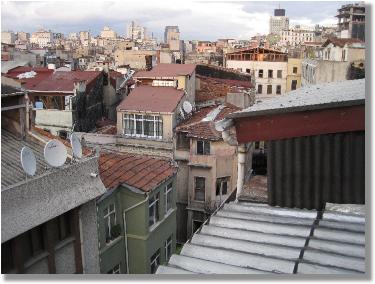 I first thought of the name Vertical Time yoga looking out from this window of an Istanbul hotel room (a seedy room an incredible view). At the time I thought, That is a strange name - and more or less forgot about it for a while. The name, however, would not let me go. Through a gradual path of inspiration, uncertainty and unknowing, the name eventually manifested into a form - and into the form of my life.
I first thought of the name Vertical Time yoga looking out from this window of an Istanbul hotel room (a seedy room an incredible view). At the time I thought, That is a strange name - and more or less forgot about it for a while. The name, however, would not let me go. Through a gradual path of inspiration, uncertainty and unknowing, the name eventually manifested into a form - and into the form of my life.
A specific form this program would take came to me when I attended a Sufi retreat in April, led by my friend and Pir (spiritual director) of the Sufi Way tradition, Elias Amidon. At that time, twelve of us spent our time in individual retreat cabins at the Nada Hermitage, a Carmelite center in Crestone and gathered at Elias's nearby home for daily classes. It was a near perfect blend of demanding solitude and genuine community. It was also the blend of traditions that I now find myself so open to, even hungry for - Catholic, Sufi, Buddhist, East, West... all of it held by the still pristine nature/wilderness of Crestone, Colorado. In some moment of unknowing I thought, "Hmm, I should do this too."
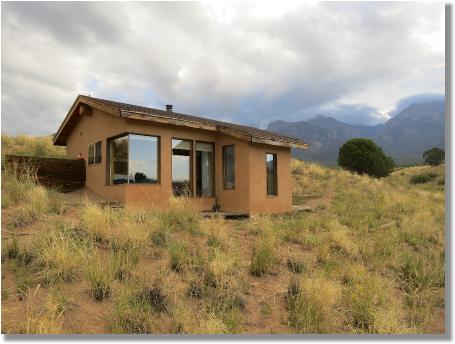 I am grateful that untold events occurred auspiciously and that three people were able to join me (several others wished to but couldn't) for six days earlier this month. We stayed in retreat cabins at the base of the Sangre De Cristo ("Blood of Christ") mountain range and gathered each morning for three hours of classes and practice. For me, it was a luxurious and stable foundation to have an entire day to prepare the talks that I would give, to choose or synthesize from the themes, traditions and experiences that have shaped my life; the drala principle, the I Ching, Human Design, Buddhist meditation and the Shambhala teachings of Chogyam Trungpa. Strangely enough, it all seemed to make sense - even to me! I am grateful to Kathleen Lynch, Richard Heilbrunn and Grace Tuma, the three friends and interested students who provided the class to make this first retreat possible possible.
I am grateful that untold events occurred auspiciously and that three people were able to join me (several others wished to but couldn't) for six days earlier this month. We stayed in retreat cabins at the base of the Sangre De Cristo ("Blood of Christ") mountain range and gathered each morning for three hours of classes and practice. For me, it was a luxurious and stable foundation to have an entire day to prepare the talks that I would give, to choose or synthesize from the themes, traditions and experiences that have shaped my life; the drala principle, the I Ching, Human Design, Buddhist meditation and the Shambhala teachings of Chogyam Trungpa. Strangely enough, it all seemed to make sense - even to me! I am grateful to Kathleen Lynch, Richard Heilbrunn and Grace Tuma, the three friends and interested students who provided the class to make this first retreat possible possible.
I found that the I Ching became the foundation and touchstone of our retreat. 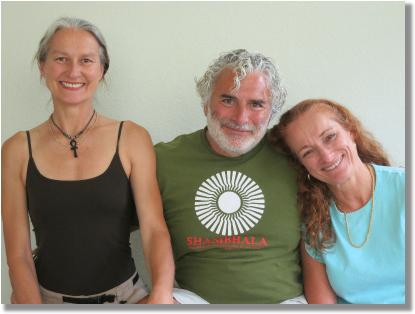 Although Grace, Richard and Kathleen had little to no prior experience with the book, this proved no obstacle and, in fact, increased my confidence in the I Ching, that it is accessible archetypal system of the human experience. That it is comprehensive, universal and emerging into consciousness in entirely new ways. Among other things, we practicing standing meditations that incorporated the six lines of the I Ching hexagrams into the somatic experience of standing. In the evening we shared the results of our I Ching throws for the day, which became not unlike sharing dreams; an intimate sharing in which not only our own but each others insights opened up the meaning of the hexagrams we had received. Learning the I Ching, like any intuitive system - and like writing poetry - requires us to open up to and trust our associative mind. Meeting the I Ching is like meeting a spiritual master, a potentially eye-to-eye situation in which we learn to trust ourselves and open to the bright mirror of life's feedback system, a mirror that helps us grow.
Although Grace, Richard and Kathleen had little to no prior experience with the book, this proved no obstacle and, in fact, increased my confidence in the I Ching, that it is accessible archetypal system of the human experience. That it is comprehensive, universal and emerging into consciousness in entirely new ways. Among other things, we practicing standing meditations that incorporated the six lines of the I Ching hexagrams into the somatic experience of standing. In the evening we shared the results of our I Ching throws for the day, which became not unlike sharing dreams; an intimate sharing in which not only our own but each others insights opened up the meaning of the hexagrams we had received. Learning the I Ching, like any intuitive system - and like writing poetry - requires us to open up to and trust our associative mind. Meeting the I Ching is like meeting a spiritual master, a potentially eye-to-eye situation in which we learn to trust ourselves and open to the bright mirror of life's feedback system, a mirror that helps us grow.
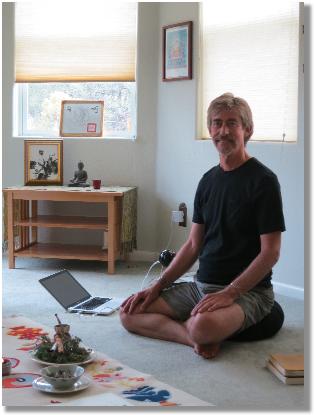 This class gave me the confidence, understanding and inspiration to move forward with an on-line class modeled and what we did together in Crestone. I warmly welcome you to become part of this class and on-line community.
This class gave me the confidence, understanding and inspiration to move forward with an on-line class modeled and what we did together in Crestone. I warmly welcome you to become part of this class and on-line community.
The I Ching and The
Human Body
An on-line class in Vertical Time Yoga
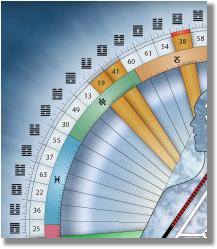
Be part of an on-line community to bring the
gifts of the I Ching - both ancient and contemporary -
into your life. The I Ching is a mirror that can align us
with our creative potential and the somatic wisdom of our body.
Read more...
